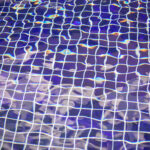Continuing our journey in The Experience Architect Chronicles, we’ve already navigated through the realms of creativity, technology, and versatile skills. In this next chapter, we anchor ourselves in the world where the minutiae reign supreme: The Art of Details.
Details are the heartbeats of an event, the notes that create the symphony, the brushstrokes that transform a canvas into a masterpiece. It’s easy to get caught up in the grand scheme of things, but it’s the finer points that often create the deepest impact. Understanding and mastering the art of details is not just about being meticulous – it’s about transforming the ordinary into the extraordinary. Here, we explore how a keen eye for detail can transform events into masterpieces of experience.
1. The Subtlety of Sensory Experiences: Expanding our focus on sensory experiences, consider how every element contributes to the story of your event. The fragrance in the room can evoke memories or emotions that relate to the theme of the event – subtle, yet intriguing. Similarly, the texture of materials used in decor, from tablecloths to backdrops, can add layers of tactile experience. The goal is to create a sensory journey that complements the visual spectacle.
2. Precision in Planning and Execution: Precision in execution extends to the smallest of details which often go unnoticed but are integral to the seamless flow of an event. This includes ensuring that the audio-visual equipment is faultless, the transitions between different segments of the event are smooth, and every staff member knows their role down to the second. It’s about orchestrating a dance where every move is perfectly timed, and every performer knows their cue. And if a small mishap does occur, the team is prepared, and the audience has no idea.
3. Personalization – The Detail that Makes the Difference: Delving deeper into personalization (a HUGE topic in today’s talk about AI and automation), it’s about leveraging data to create bespoke experiences. Imagine an event where the menu is tailored not just to dietary preferences but also to individual tastes, or where the seating arrangement is designed to foster meaningful networking based on individual attendee profiles. Attendees want to be met where they’re at. They want it to feel authentic, relevant, and relatable. In these details lies the power to transform attendees into active participants in your event narrative.
4. Thematic Cohesion: Every detail should reinforce the theme of your event. This goes beyond mere decor – even the fonts on the signage, the style of the presentations, and the attire of the staff cohesively align with the theme. For example, take a tech conference. It could have a futuristic theme with sleek, modern designs, interactive digital installations, and a consistent technological motif throughout.
5. Anticipating Needs: Attention to detail is also about anticipation – foreseeing the needs and expectations of the attendees before they arise. Have a plan for unexpected weather changes, provide special assistance for attendees with specific needs, or even create quiet zones for attendees to relax and recharge. (We get it, sometimes the human battery needs a charge, too!)
6. Reflection and Adaptation: Post-event reflection is crucial, both internally as a production team and with the client. Gather feedback, reflect on what worked and what didn’t, and adapt for next time. Even collecting attendee feedback through post-event surveys are critical in driving future experiences. Each event is a learning opportunity – a chance to refine your approach to those minute details.
Ultimately, the art of details is about creating a holistic experience where every element, seen or unseen, plays its part in crafting a memorable experience. It is most certainly a challenging yet rewarding endeavor, but one that sets apart a true Experience Architect from the Event Planner.
As we close this chapter of our Chronicles, remember that the pursuit of perfection in details is a journey of continuous learning and adaptation. In our next chapter, we will uncover more intricacies of becoming an Experience Architect. Until then, let’s embrace the beauty in the details, for they are the threads that weave the fabric of extraordinary experiences…



